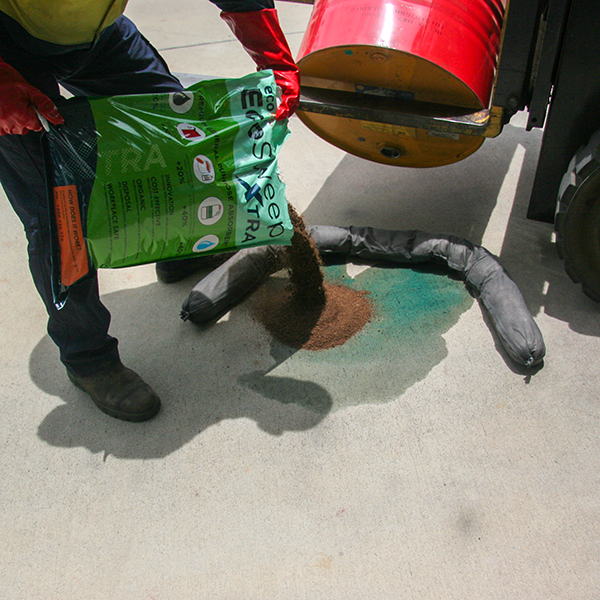Customising Spill Absorbents for Different Industries: What Works Best?

With all the safety hazards that come with handling and managing various chemicals, it is only natural that each industry be required to adhere to specific regulations to help make sure their chemical handling and response keeps their workplace and community safe — how can they do this? Through proper spill management.
From manufacturing to healthcare, proper spill management helps industries manage emergencies and keep chemicals contained within their workplace. This kind of training and preparedness makes or breaks any situation they find themselves in.
With this, spill absorbents play a central role in spill management — no matter the industry. Depending on the kind of liquids and chemicals each industry handles, there are various kinds of spill absorbents that are perfect for the job.
Let’s dive right into the different kinds of spill absorbents!
Understanding the Basics of Spill Absorbents
Before getting into customisation, it’s important to know what spill absorbents are.
These products are made to soak up liquids, stopping spills from spreading and causing more damage. They come in different types, such as pads, rolls, pillows, and socks, each designed for specific uses based on the kind of spill and where it happens.
Types of Spill Absorbents
Universal Absorbents: Suitable for all types of liquids, including water, oil, and chemicals. These are often used in general industrial settings.
Oil-Only Absorbents: Designed specifically for petroleum-based liquids. They are hydrophobic, meaning they repel water while soaking up oil, making them ideal for marine applications or areas with potential oil spills.
Chemical Absorbents: Tailored for hazardous materials, these absorbents are resistant to acids, bases, and other reactive substances. They are crucial in environments where chemicals are frequently handled, such as laboratories or chemical manufacturing plants.
Your Spill Absorbent Guide for Every Industry
Manufacturing Industry
In manufacturing, spills are often the result of operational processes involving various chemicals and lubricants.
Recommended Customisation:
Heavy-Duty Absorbents: Manufacturing facilities benefit from robust absorbents that can handle large spills. Using oil-only absorbents in areas where lubricants are common can enhance efficiency and reduce waste.
Colour-Coded Systems: Implementing colour-coded absorbents can help workers quickly identify the right type for specific spills, streamlining the response process.
Healthcare Sector
Healthcare facilities require spill absorbents that are not only effective but also compliant with health regulations.
Recommended Customisation:
Antimicrobial Treatments: Incorporating antimicrobial agents into absorbent materials can help minimise infection risks when dealing with bodily fluids.
Biohazard Markings: Clearly labelled biohazard absorbents ensure that staff can easily identify and handle hazardous spills safely.
Food and Beverage Industry
Spills in food processing and beverage production pose unique challenges due to hygiene standards and the nature of the liquids involved.
Recommended Customisation:
Food-Safe Materials: Utilise absorbents made from food-safe materials that comply with health regulations to ensure no harmful substances leach into food products.
Quick-Drying Options: Fast-absorbing materials can help prevent slips and falls in areas where spills are likely to occur, such as kitchens and breweries.
Oil and Gas Industry
The oil and gas sector is particularly vulnerable to spills, making customised absorbents vital for safety and environmental compliance.
Recommended Customisation:
Hydrophobic Properties: Oil-only absorbents are essential in this industry. Customising these with enhanced hydrophobic features can improve their effectiveness in marine and offshore environments.
Large-Capacity Options: Given the scale of potential spills, large absorbent rolls or booms should be readily available to manage larger incidents quickly.
Factors to Consider When Customising Absorbents
Spill Size and Frequency
Understanding the potential size and frequency of spills in your industry is critical. High-volume operations may require larger, bulkier absorbents, while smaller, more frequent spills can be managed with pads and socks.
Environment
Consider the physical environment where the absorbents will be used. For example, outdoor settings may need UV-resistant materials, while indoor environments may require options that do not produce dust or particles.
Compliance and Regulations
Every industry has its own set of regulations concerning spills and waste management. Customising absorbents to meet these legal requirements is crucial for avoiding fines and maintaining a safe work environment.
Training and Implementation
Customising spill absorbents is only part of the equation. Proper training on how to use these adsorbents effectively is equally important.
Find the Right Spill Absorbent for Your Industry
Customising spill absorbents to meet the specific needs of different industries is a crucial part of effective spill management. By recognising what each industry requires, choosing the appropriate absorbent materials, and offering thorough training, organisations can improve their ability to respond to spills.
Putting time and effort into customising your spill response plan can lead to significant long-term benefits. With Ecospill’s wide range of spill absorbents, your organisation can be equipped with the right tools to keep your workplace safe and maintain operational efficiency.
Visit our website to see how we help handle various kinds of spills through our different spill containment products.
